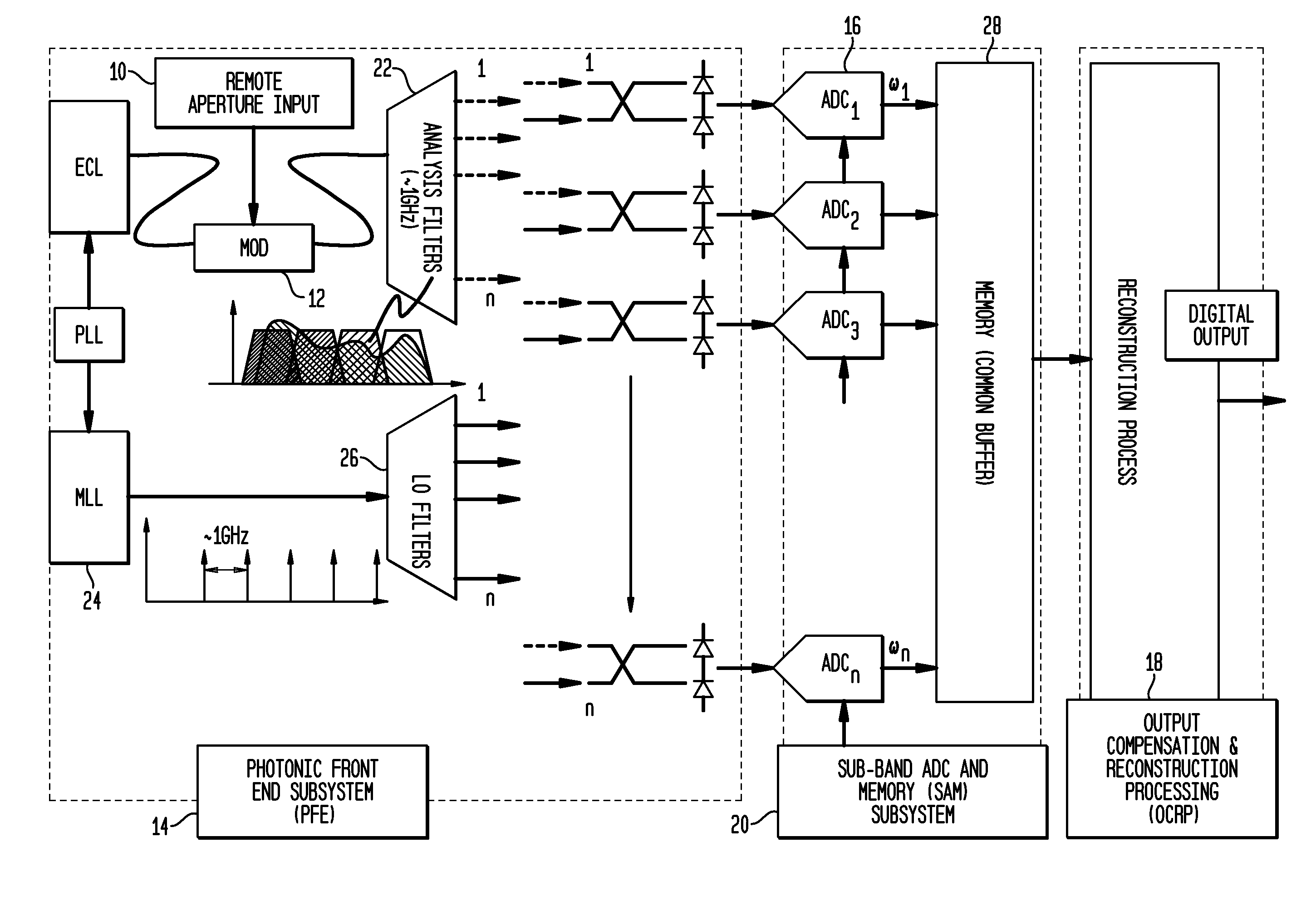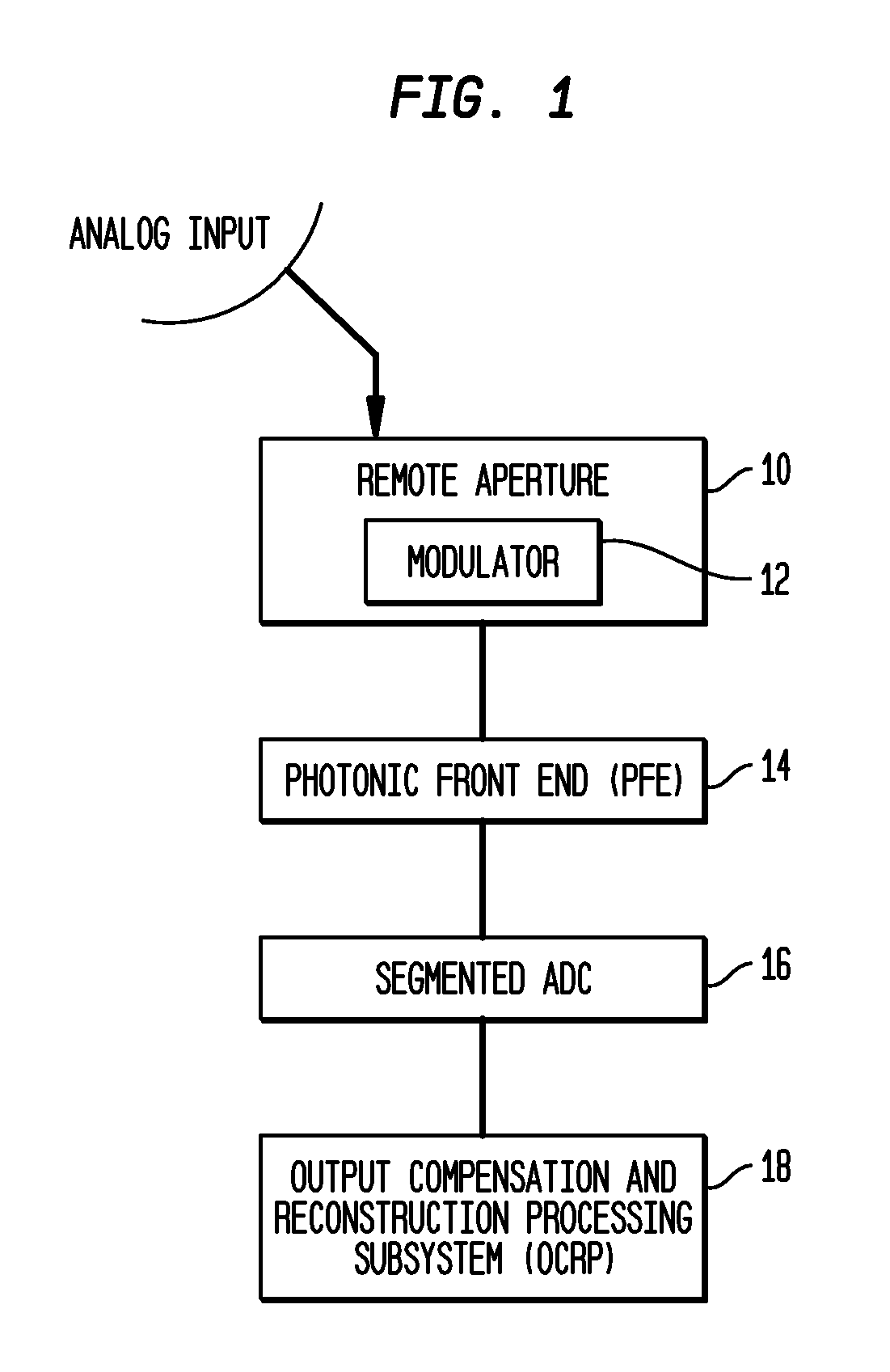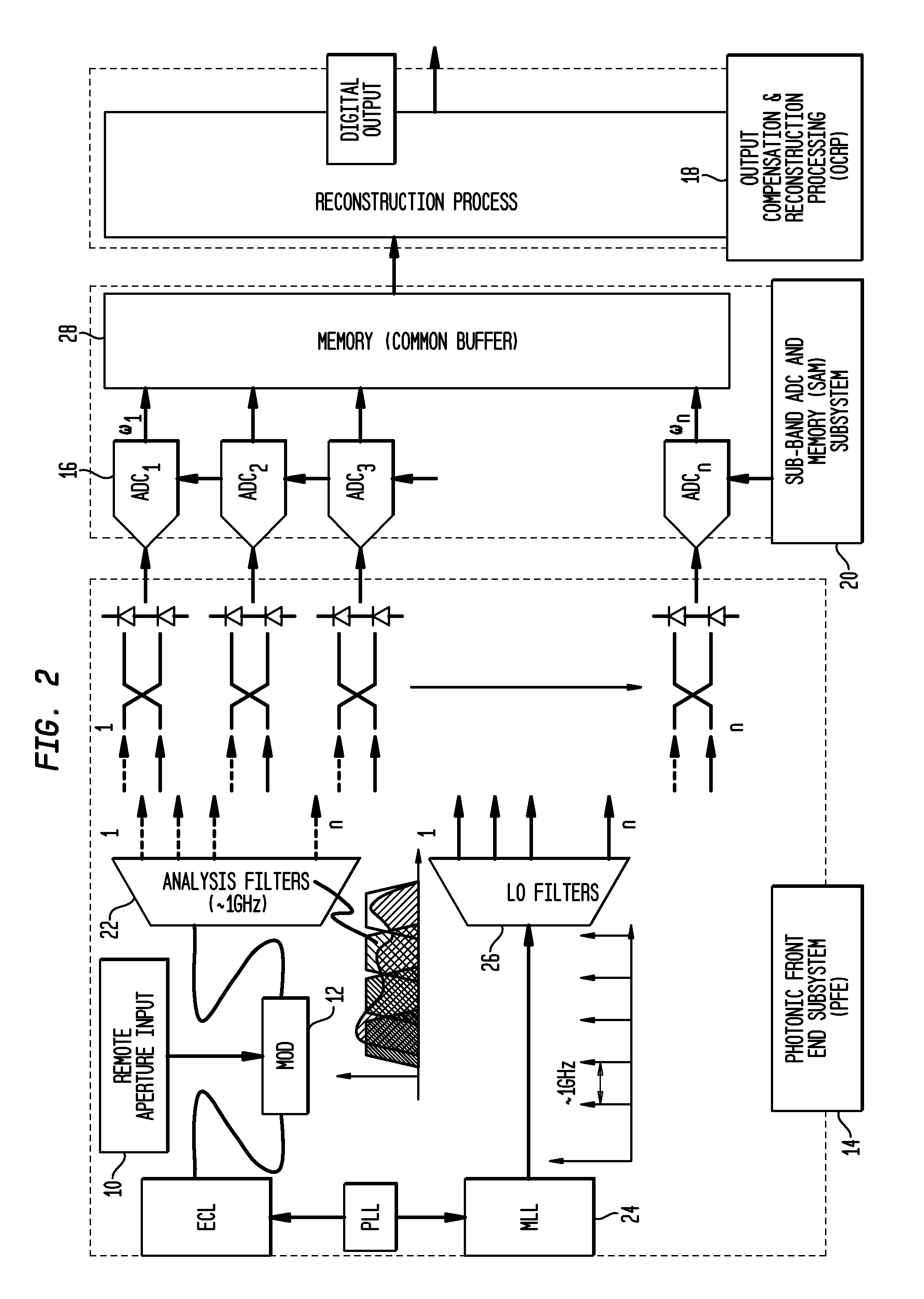System and method for selective wavelength interleaved filtered technique (SWIFT) ADC
a selective wavelength and filtering technology, applied in transmission systems, analogue/digital conversion, instruments, etc., can solve the problems of slow progress of adc performance, limit its performance, sampling jitter and quantization resolution, etc., to achieve high rate, high accuracy, and high performance.
- Summary
- Abstract
- Description
- Claims
- Application Information
AI Technical Summary
Benefits of technology
Problems solved by technology
Method used
Image
Examples
Embodiment Construction
[0035]FIG. 1 is a schematic diagram of the SWIFT ADC and its four building blocks, including remote aperture 10 with modulator 12, photonic front end (PFE) 14, segmented ADC comprised of a plurality of individual ADCs 16, and output compensation and reconstruction processing (OCRP) 18. As shown in FIG. 1, a simple modulator-based aperture element accepts input at a distance from the PFE element. The PFE derives high fidelity from an ultra-stable set of frequency references originating in an MLL optimized as a compact low-power source of low phase noise oscillators. At the heart of the PFE are a set of high resolution optical filters. Operating entirely in the frequency domain, the PFE executes critical signal processing and distribution functions to implement a coherent IF downconversion receiver array that segments and delivers IF data to a plurality of ADCs, each operable to receive and convert one supplied electrical signal derived from the plurality of subsequent optical signals...
PUM
 Login to View More
Login to View More Abstract
Description
Claims
Application Information
 Login to View More
Login to View More - R&D
- Intellectual Property
- Life Sciences
- Materials
- Tech Scout
- Unparalleled Data Quality
- Higher Quality Content
- 60% Fewer Hallucinations
Browse by: Latest US Patents, China's latest patents, Technical Efficacy Thesaurus, Application Domain, Technology Topic, Popular Technical Reports.
© 2025 PatSnap. All rights reserved.Legal|Privacy policy|Modern Slavery Act Transparency Statement|Sitemap|About US| Contact US: help@patsnap.com



